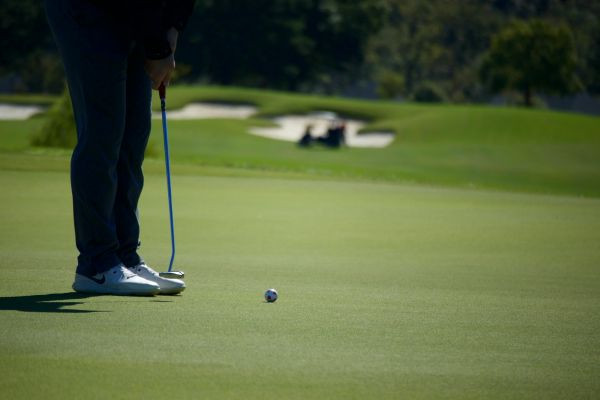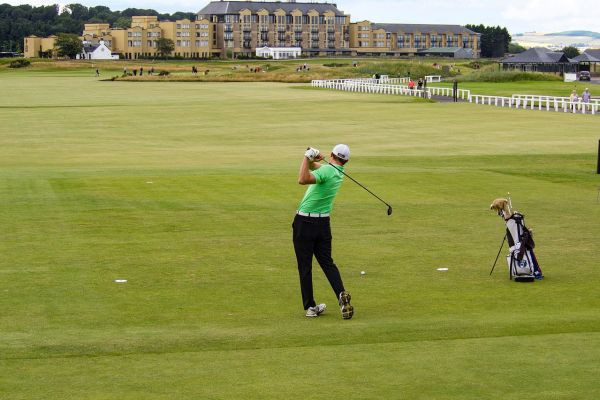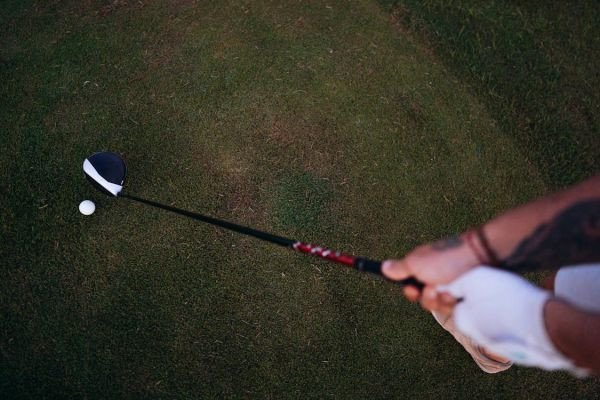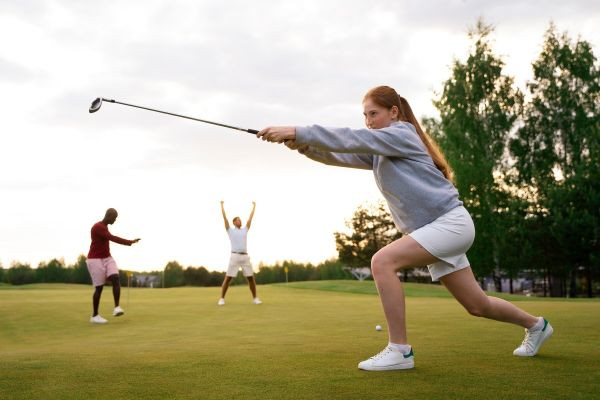The Art of A Perfect Downswing: Pro Tips for Power, Precision and Performance
The downswing is undoubtedly the most crucial stage in the golf swing. It’s the phase that determines several aspects like performance and precision. It’s also at this point a player lets loose their ..

The downswing is undoubtedly the most crucial stage in the golf swing. It’s the phase that determines several aspects like performance and precision. It’s also at this point a player lets loose their power. If you want to take your game one notch higher, it’s important to grasp the mechanics of the downswing. When you master the art, your bogey will transform into pars and near-misses into birdies. This write-up looks at the pro tips, strategies, and approach to transform your downswing from mediocrity to excellence.
Grasping the Downswing
If downswing has to be compared with something, it’s the crescendo in a symphony. It’s that juncture when all aspects of the swing meet together to produce a precise, effective, and incredible shot. This period starts at the top of your backswing and completes at the moment your club touches the ball. A number of vital movements have to be in sync at that specific moment.
Two aspects, simplicity and complexity make downswing beautiful. Other aspects such as biomechanics and physics also play an important role as they harmonize the movements of your body and the club to produce high speed without compromising balance and precision. It happens quickly, the transition taking place in moments but it’s what determines whether a shot is exceptional or average.
You need to have a flawless downswing in order to put the energy into the ball which you gathered during the backswing. It’s at this period when potential energy converts to kinetic energy. When you carry out the action faultlessly, the downswing makes sure that all the initial work which you did in the earlier phase and backswing builds up to produce a potent but well-managed impact. To make sure that the clubhead travels on the ideal route to contact the ball correctly and with intense speed, it’s necessary to maintain the unity of the swing arc, plane and tempo.
Key Components of a Powerful Downswing
1. Lateral Weight Shift
The Lateral Weight Shift is like the starting signal for the downswing. It means shifting your body's balance towards the target, laying down a base for the rest of your swing movements. This movement is crucial for generating power. It needs to be controlled to prevent any sliding that could throw off your balance and accuracy. It's a step that kick starts everything, paving the way for a transition into the rotational actions of the downswing.
2. Hip Unloading and Rotation
The hips play a role in driving the downswing acting as the powerhouse behind the motion. As your weight shifts from side to side your hips start rotating, releasing the stored energy from your backswing. This rotation isn't about turning; it's a motion that involves coordinating movements in your lower body to optimize power transfer along the kinetic chain. The hips take charge creating a pathway for your body, arms and eventually the club to follow suit.
3. Arm Positioning and Movement
When it comes to arm positioning and movement it's all about finding that spot, between accuracy and power. When swinging a golf club it's important for the arms to follow the body's rotation smoothly and drop into position to approach the ball correctly. This helps to prevent making swings that go over the top and result in slices. The arms play a role in transferring power from the body to the clubhead ensuring speed at impact.
4. Wrist Hinge Maintenance
Maintaining wrist hinge during the downswing is essential for keeping the club on track and generating speed as the wrists release before impact. This part of the swing requires precision and timing to unleash power while controlling the club's direction.
Step-by-Step Guide to Perfecting Your Downswing
1. Initiating the Downswing
The Squat Move
To start the downswing, players can incorporate a move known as "the squat," influenced by golfers like Sam Snead and Tiger Woods. This movement starts with a bend in the knees, entering the initial phase of a squat.
It's not about bending your knees; it involves a shift that activates your lower body preparing for a chain reaction of movements during your swing. This action helps lower your center of gravity, enhancing stability and enabling you to generate force by utilizing the ground. The key is to integrate this motion with the rest of your swing to ensure it initiates actions in the downswing sequence effectively.
2. Executing the Downswing
Hip Rotation
After establishing the foundation with the squat move the next step is to rotate your leading hip. This rotational movement is crucial during the downswing as it serves as the driving force that propels the club towards impact with the ball. It should be a strong rotation allowing space for your arms and club to follow a path downward. Achieving this hip rotation requires finesse and power demanding timing to synchronize with weight transfer and arm motion.
Dropping the Arms
When transitioning into the downswing the lower body kicks things off with a motion and hip rotation while the arms start their descent, towards the ball. This downward motion should feel organic like gravity's guiding the arms and club downwards. It's important to control this arm drop and keep it in sync with your body's movements. Make sure your arms drop inside the target line to set up a strike that goes inside out on the ball for both distance and accuracy.
Elbow to Hip Connection
An overlooked part of the downswing is how your trailing elbow connects with your hip. This connection ensures that your downswing stays on the plane and avoids the mistake of swinging over the top that often causes slices. By getting your trailing elbow to your trailing hip you create a lag in the club which sets up a strong release, at impact. It should feel like your elbow is tucking in beside you encouraging a forceful swing.
3. Finalizing the Downswing
Shoulder Movement
When you're reaching the peak of your downswing, pay attention to how your trailing shoulder moves. When swinging make sure your shoulder moves down and forward, in sync with your body and arms. This motion is key to guiding the clubhead towards the ball for precise shots. The trailing shoulder naturally follows the kinetic chain of the downswing leading to an impact.
Weight Transfer and Follow-Through
As you near the end of your swing focus on shifting your weight to your leading side for a follow through. This weight transfer is crucial for sending the ball towards your target with strength and accuracy. Let this movement flow naturally from your actions as you smoothly transition your body weight to your foot.
The follow through is like the finale of your swing showing that all components have worked together harmoniously. Ensure it's complete and well balanced with your body facing the target and the club finishing high. Common Errors to Avoid in the Downswing of Your Golf Swing
Common Downswing Mistakes and How to Avoid Them

Source:https://www.pexels.com/photo/man-playing-golf-together-with-his-children-9207301/
Over the Top Swings
One mistake many golfers make is executing an "over the swing” where the club strays from its intended path resulting in slices or pulls. This error often stems from starting the downswing with the upper body initiating movement of the lower body.
To rectify this issue pay attention to the order of movements during your downswing; prioritize shifting your weight and rotating your hips first followed by engaging your arms and shoulders. Practicing drills that emphasize this sequence such as the "Squat and Rotate" drill can be highly effective in addressing and improving this flaw.
Early Hip Rotation
Beginning the hip rotation prematurely can disrupt the timing and coordination of your swing affecting accuracy and power. This mistake often stems from an eagerness to generate speed too early in the downswing.
To avoid this concentrate on the timing of your hip rotation ensuring it's initiated only after the lateral weight shift. A useful drill for timing your hip rotation is the "Hip Pause Drill" where you consciously pause at the top of your swing before starting your hip turn reinforcing the proper sequence.
Losing Balance
Balance is crucial in golf as it affects every phase of the swing, especially the downswing. Losing balance can lead to inconsistent ball striking and reduced power. This issue is often due to improper weight distribution and a lack of coordination between the swing's moving parts.
To maintain balance focus on a centered stance and ensure a smooth transition of weight from back to front foot during the downswing. The "Single-Leg Balance Drill" where you practice swinging while balancing on one leg can significantly improve your stability and coordination.
Drills to Enhance Your Downswing
The Stop and Go Drill
The drill is used to improve your downswing sequence. Taking a pause at the top of the swing allows you to reset and set your downswing correctly. Do the following to improve your drill: Take your backswing. Once your club reaches the top pause for a count of two. Focus on the downswing being initiated by the lateral weight shift and hip rotation following the arms dropping and lastly the rotation of the drill. This drill teaches your body muscle memory resulting in a better and more straightforward downswing.
Gary Player’s Step-Through Drill
This drill was established by Gary Player and does an excellent job emphasizing the importance of transferring your weight as you rotate to generate power. To do the drill set up normally as you do and while you are bringing your swing down step your back foot to the target creating the effect of walking through the drill. This exaggerated movement ingrains the feeling of 'driving' through the golf balls with everything resulting in more power and follow-through.
Left Hand Release Drill
This drill is designed to train your hands to aim the clubface correctly at impact. It is the most important goal when aiming your shots in golf. To do this drill Take the golf swing focusing only on your leading hand. If you are a right-handed golfer, then aim using your right hand.
Also, focus on the relationship or more like the sensation of 'releasing lottery with your leading hand only. I sincerely hope you got an idea about what drills you need to do to better your swinging game.
Conclusion
Mastering the downswing can take you on an enlightening journey that redefines your golf play. Then you should practice diligently, relishing every great shot you make. Learning from professionals about the downswing is essential; by striving to become an expert in golf, you can master the downswing.
Frequently Asked Questions (FAQs)
What is the most important part of the downswing?
Start of the Downswing is the most important, which is also called the initiation of downswing. As it helps to set up the tempo and the direction of the golf swing. When the lateral weight shift and hip rotation start correctly, the club has no choice but to get into the right position and move onto the right path.
How can I prevent slicing the ball in my downswing?
Many times, slicing comes from an "outside-in" club path with the club outside the target line. To eliminate the slice, ensure the arm drop is correct and your elbow stays close to the body to enable an inside-out swing. By doing exercises that include some moves to help demonstrate a perfect hip rotation with a perfect arm position, slice will no longer worry you.
How often should I practice my downswing drills?
We should practice the downswing drills to have muscle memory. Practice at least once a day with short but focused sessions to have the perfect result. Significant improvements can be achieved with just a minute or two of practice if done consistently over time. We should keep the practice consistent as it will help to increase the complexity of the movements over some time.
What should I focus on if I’m just starting to work on my downswing?
A beginner golfer needs to learn the correct side weight shift and hip rotation. A player who is just starting to learn the downswing will first move on to do arm movement. Your wrists should act like hinges to initiate the proper club movement in the correct position during the downswing.
How can I measure improvement in my downswing?
To gain a more useful view of how your downswing improves steadily with time, track factors such as how well you connect your shots, the distance and accuracy of your ball landings and the feel and appearance of your swing. Use video capturing technologies or track your performance using launch monitors for accuracy.








































































